#preventorium
Text
I know this is a long shot, but are there any historians or history graduate students willing to help me with my paper? It’s historiography and I just want opinions on that chapter of my thesis. I have no one to turn to, sadly, and the professor in charge hasn’t talked to me in months. :)/s
I’ll trade you something for your time.
If anyone is willing to reblog this for visibility, that would mean so much. I have no one to ask for help from so I’m desperate!
#history#historiography#graduate school#academia#master’s thesis#history of medicine#tuberculosis#sanatorium#historic preservation#preventorium#that’s the thesis
17 notes
·
View notes
Text
Married white bitch from pof sucking BBC while talking about her husband
Busty MILF Sara Jay takes a shower in a bikini
Sex with big booty sex mate
Cogiendo con mi novia y la lleno de leche
Unfaithful english mature lady sonia shows her huge breasts
On The Phone Free Use
Oiled and Dildo Ride
ExoticPanda Cumshot Compilation
Skinny Teen First Time In Sex Riding Cock and Doggy Style
Young twink butt fucking gay porn movietures An Appreciative Boy Gets
#hike#oophoropexy#Terebrantia#proletarized#Ribandist#sky-god#preventoriums#fuddle-brained#everich#bbs#hockling#Festschriften#adherents#Quirk#artilleries#wreck-free#Scharaga#overcast#poetscommunity#shallow-soiled
0 notes
Text
Заполярный — посёлок городского типа с населением около 500 человек, входит в состав городского округа Воркуты, от которого удалён на 35 км.
Посёлок возник как поселение при строительстве шахты № 27.
Расцвет посёлка приходится на конец 1980-х гг, когда здесь проживало около 9.000 человек. В посёлке функционировали: две школы, детская музыкальная школа, вечерняя школа рабочей молодёжи, больница, поликлиника, скорая помощь, санаторий-профилакторий, дом быта, дом культуры, ресторан, столовая, кафе, пивная, 5 детских садов, спортзал, крытый каток, тир, почта, баня, сберкасса, аптека, ликеро-водочный завод, 5 непродовольственных магазинов («Одежда», «Посудо-хозяйственный», «Промтовары», «Книги», «Мебель, игрушки и канцтовары»), 6 продуктовых магазинов, пожарная охрана, горно-спасательный взвод.
Zapolyarny is an urban-type settlement with a population of about 500 and is part of the Vorkuta urban district, from which it is 35 km away.
It was established as a settlement during the construction of mine No. 27.
The heyday of the town fell at the end of the 1980s, when it had a population of about 9,000. The village had: two schools, children's music school, evening school for working youth, hospital, polyclinic, ambulance service, sanatorium-preventorium, community centre, house of culture, restaurant, dining room, cafe, pub, 5 kindergartens, gym, indoor ice rink, shooting gallery, post office, Bath, post office, Savings bank, pharmacy, distillery, 5 non-food shops ("Clothing", "Household goods", "Industrial goods", "Books", "Furniture, toys and stationery"), 6 grocery shops, fire service, mountain rescue platoon.

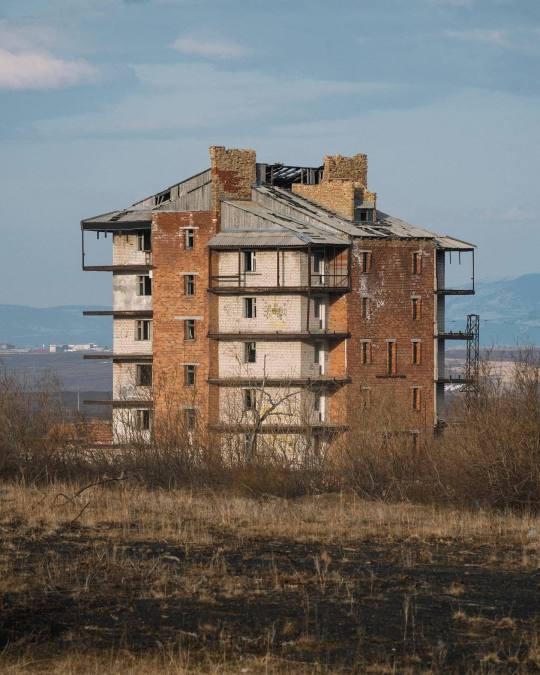




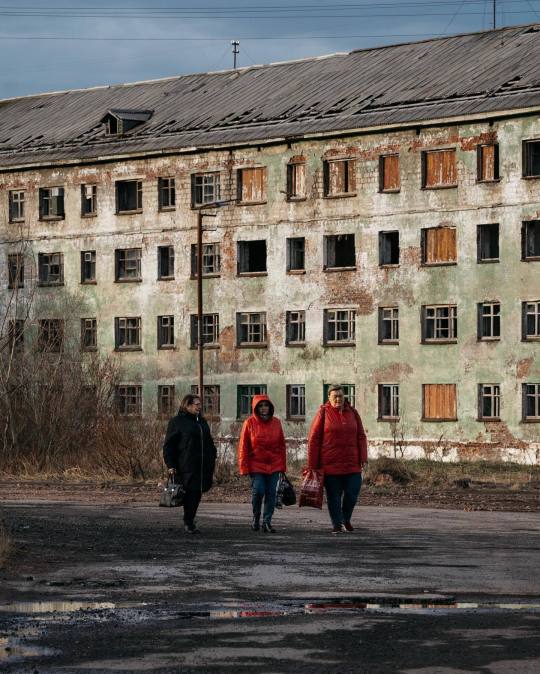
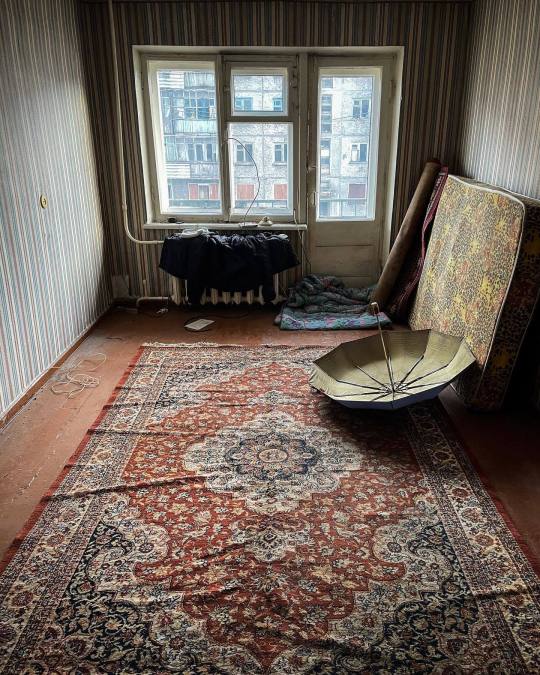


10 notes
·
View notes
Photo


The Women of Chateau Lafayette was an interesting story with a triple timeline. The book was written during the American Revolution and the French Revolution, during World War I and then during World War II. With all the different characters and talking about the same places it became difficult to keep up with the characters and what eras they belonged in and who was who. As the book progressed this became less of an issue. There was a lot of information and even though it was interesting it was overly long, thus the 4 star rating. I would recommend to those who enjoy historical fiction and have the time to read it.
#thewomenofchateaulafayette#stephaniedray#netgalley#americanrevolution#adriennelayfayette#frenchrevolution#ChateauCavaniac#WorldWarI#$worldwarii#antisemitism#prisions#deathcamps#preventorium#benjaminfranklin#georgewashington#kinglouis#Marieantoinette#napoleanbonapart#gestapo#genardames
0 notes
Text
REȚETAR LITERAR: Nan Constantin Ilie
REȚETAR LITERAR: Nan Constantin Ilie
Datorită familiei si a prietenilor, anul 2020 a fost plin de momente minunate.
Iată unul dintre ele:
youtube
View On WordPress
0 notes
Note
so, I was re-reading The Women Of Chateau Chavaniac, and one of the stories there is about a mrs. Chanler and how she bought the chateau and transformed it in a half museum half orphanage and preventorium.
I tried to look more deep into this, but I couldn't find any more information about that, so, how is that nowadays, or how did it ended? Do you know smth about it?
Thank you very much :)
p.s. it still causes me pain how all we have in their website is a "Many Jewish children were secretly hidden in the castle [during World War 2]" 'cause even tho I do understand with all my heart it not having much details... come on somebody could've wrote about it later, I like history with details especially about something like this lmao
Hello msrandonstuff,
Sorry that it took me so long, I have been quite busy these past weeks - and I also did some research :-) Your question is really interesting, thank you for that. The biography of the Chateau is just as intriguing as La Fayette’s own biography but is often overlooked. I recently read an interview/blog entry by Stephanie Dray, the author of The women of Chateau Lafayette, where she explained that in her experience the history of the Chateau is more mysterious and harder to research than any other aspect of La Fayette’s life - and I would agree with that. A lot has been written about La Fayette but even his most dedicated biographers have only written a few remarks about the history of the Chateau after his death. Truly a pity if you ask me, because La Fayette for the most part would have loved what happened with the Chateau!
The Chateau and the grounds served a number of charitable courses over the last 100 years. In 1916 the French Heroes Fundbought the Chateau and corresponding lands from the current owner, Gaston Pourcet Sahune Dumottier de Lafayette and modernized the property. The group (made up almost exclusively of rich, influential Americans) had been already active in different social causes in the past (namely arranging employment for single women and discharged soldiers) but this would be their greatest project. They renamed themselves the French Heroes Lafayette Memorial Fund (FHLMF) shortly thereafter. Beside modernisation, they also worked on a museums installation about La Fayette (and Washington). In 1917 they founded a school for French orphans so that, despite their personal misfortune, they could receive a solid education and have the best possible prospects in life. The French children were soon joined by orphans from other countries who had fled to France. The school was established in one of the outbuildings and not in the Chateau directly. In 1918 a second outbuilding was converted into a preventorium - a place where sick children could not only recover but where they would be educated despite their conditions. When Paris was bombarded in 1918 and many people fled the city, the Chateau and the FHLMF provided shelter for Parisian children. They offered shelter to so many children indeed, that even the spacious Chateau could not provide for all of them and so shelters were erected on other former properties of La Fayette’s that now belonged to the FHLMF. The logistical mastermind behind the evacuation was Mrs Beatrix Chanler, the wife of FHLMF founding member and Senator William Astor Chanler. Beatrix was dedicated to the cause of the FHLMF and charitable causes in general and did a lot of relentless work for the FHLMF and other organisations. She is one of the main characters of The women of Chateau Lafayette. Women in general always played an important role in the history of the Chateau. Be it Adrienne de La Fayette, Mrs Chanler, Mrs Le Verrier who later administered the Memorial Lafayette Inc. …

Portrait-photography of Mrs Chanler.
The FHLMF was converted in the Memorial Lafayette Inc. in 1921 to better continue their work. The inter-war-years saw a lot of structural changes. The school from 1917, until now more or less an elementary school was converted into a junior High School in 1926 and in 1931 a college was added that ran more or less independent. The preventorium moved a bit further away from the Chateau and received its own “infrastructure”. In 1937 the preventorium was “outsourced” and the Lafayette Preventorium Inc. was founded. Parallel to all of this, the Chateau itself was also worked on. The rooms were refurnished, a park was created and the building was even further modernized. John Moffat, founding member of the FHLMF, was the chairman of the Memorial Lafayette Inc. until this point in time but the left France in 1938 and only returned in 1946. While he was still chairman during this time, the administration was de-facto handed over to Baron Amaury de la Grange - now here is where I did some digging :-)
As you already stated, the official sources say precious little about the Jewish children that were hidden in the Chateau during the Nazi regime and none of the books I have read provided more information. Luckily for us though there are two components to this question - La Fayette and the Chateau and the Nazi regime. There are a number of databanks and websites that collect information and documents about the hundreds of thousands of people who have been oppressed, imprisoned, killed or in any other form been mistreated by the Nazi regime. I went to the Arolsen Archive and searched for the Baron. Here is what I found:

VII/7a - GÖ.
An das
Internationale Komitee vom Roten Kteuz
Genf/Schweiz
Zu Händen des Herrn Gellopin.
Betr.: Ermittlung des Herrn Baron Amaury de la Grange.
Bes.: dort. Schr. V. 20.09.1943 JL/[illegible]/GF G 66 G 85.
Anl.: -
Das Präsidium des Deutschen Roten Kreuzes nimmt höflichst Bezug auf das obrige Schreiben, und ist erfreut, Ihnen mitteilen zu können, dass Herr Baron Amaury de la Grange Senator vom Département Nord ist. Der Genannte wohnt mit seiner Frau in Paris, 16 rue Saint Guillaume. Die Post für Herrn Amaury wird augenblickklich nach Chavaniac-Lafayette (Haute-Loire) adressiert.
Mit dem Ausdruck vorzüglicher Hochachtung!
Deutsches Rotes Kreuz.
Der Chef des Amtes Auslandsdienst
(Hartmann)
My translation of the main body of the document:
The headquarters of the German Red Cross most politely refer to the letter mentioned above [a letter by the International Committee of the Red Cross, dated September 20, 1943], and are happy to inform, that Mister Baron Amaury de la Grange is a senator of the Département North. He lives with his wife in Paris, 16 rue Saint Guillaume. The mail for Mister Baron Amaury is currently send to Chavaniac-Lafayette (Haute-Loire).
With the sign of greatest respect!
German Red Cross.
The boss of the section for foreign affairs
(Hartmann)
The letter was written by the German Red Cross (GRC) and was addressed to The International Committee of the Red Cross (ICRC). The GRC had strong ties to the Nazi regime whereas the ICRC tried their best to lobby for the people mistreated by the Nazis. These two different stances were forced to clash but the ICRC never completely severed their ties with the GRC because they feared that such a move would complicate their work even further. So this letter is in and on itself quite an interesting historical document. We see that this letter was written on November 8, 1943. Amaury was arrested by the Gestapo on August 10, 1943.

Commemorative plaque outside the church in Chavaniac-Lafayette.
That means that by the time this letter was written, as well as by the time the ICRC send their inquiry, Amaury had already been arrested. In all likelihood the ICRC could not locate him or get in contact with him and that is when the ICRC turned to the GRC to see if they knew more about Amaury’s whereabouts. If they did so, they did not wrote it in their reply.
Amaury was brought to the Concentration Camp in Buchenwald and probably also to a camp in Tyrol - but I am not quite sure about that one. Anyway, he was released in 1945 and died in 1953 in Zürich. Local tradition has it that Amaury was arrested because he was a prominent member of French politics at the time and because it was also known that he was not a sympathiser of Hitler’s. Some sources describe him as “Hitler’s hostage” and many of the prisoners from the KZ Buchenwald were send there for political reasons.
It seems as if Amaury was not arrested because of his doings in the Chateau - even more so, it seems as if the Nazis never suspected Jews to be hidden in the Chateau. Neither the Arolsen Archive nor any other Archive mentions people that have been arrested in Chavaniac. The archives of Yad Vashem mentions a Léon Lévy in connection with Chavaniac-Lafayette. He was born in 1900 and thankfully survived the Shoah. He evidently was not one of the hidden children but maybe one of the people who hid them or a member of the résistance. It seems as if the résistance used the Chateau as well as a short term hiding place but also to store ammunition and equipment there.
Gisele Feldmann was one of the children hidden at the Chateau and she wrote a book about her experiences Saved by the spirit of Lafayette (a rather short book that I highly recommend). She was hidden at the Chateau with her brother and at least 15 other children. She also refers to “staff-members” and members of the résistance that were with them at the Chateau. Feldmann does not give any names or any other details that would allow identification. This is something that we often see. The courageous man and women, who risked their own life in hiding those that the Nazis were after, often never get the recognition that they rightfully deserve because we are unable to identify them. Every written note, every name, every detail, every person trusted could lead the Nazis on their tracks and thus lead to imprisonment (not only for them but for their entire families and friends as well), torture and death. Despite this, local tradition has it that up to 60 people from the village knew what was going on and/or willingly participated in the hiding of the children and the actions of the résistance. These numbers are backed up by the claims of a former member of le Maquis.
There is an interesting article in the Gazette of the American Friends of Lafayette, No. 5. This issue was published on April 5, 1945, so right after the War, and features a detailed report about the history of the Chateau, both during World War I and World War II as well as during the years in-between (pages 3-4).
I think we can all agree that there should be more about this part of the history of the Chateau and who knows, maybe somebody will one day do the research that this topic deserves. The lack of material is discouraging at first but it is also a good sign - it probably means that these acts of courage and resistance worked, that the children were not found and could hopefully be reunited with their families after the war.
The Lafayette Memorial In. continued their work more or less the same after the war. Especially the preventorium was noted in the 1960’s. But as time passed by there was more demand for the museum part and less demand for the schools and preventorium. In 2009 the department of the Haute-Loire assumed ownership and management of the Chateau and lands. Accommodations for this change have been made in the years prior. I can not tell you when the schools officially closed but the preventorium was merged and restructured a few times between 2007 and 2008 before it was closed in 2008.
I hope that answered you question thus far and I hope you have/had a gorgeous day!
#ask me anything#msrandonstuff#marquis de lafayette#lafayette#la fayette#general lafayette#historical lafayette#chateau chavaniac#fhmlf#wwi#wwii#shoa#resistence#jewish history#european history#french history#american history#book#stephanie dray#1945#1938#1917#1918#1919#2008#yad vashem
23 notes
·
View notes
Photo
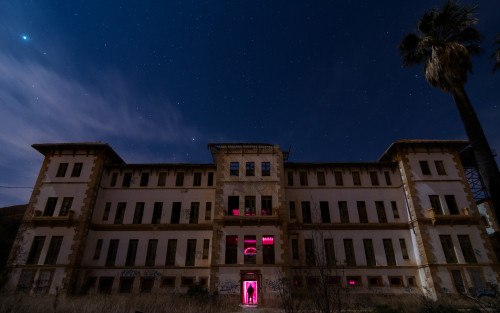
Preventorium of Aguas de Bussot, Alicante
46 notes
·
View notes
Photo
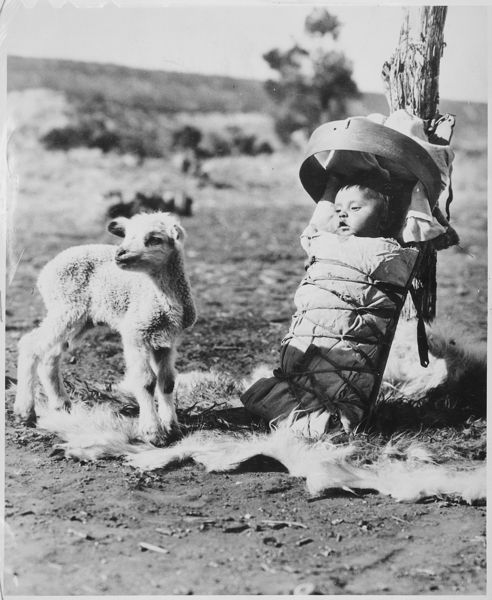
Navajo papoose on a cradleboard with a baby lamb, Window Rock, AZ,1936. Records of the Bureau of Indian Affairs (NARA ID 519160).

Thomas Eagle Thunder L.B. 73, undated, Records of the Bureau of Indian Affairs (NARA ID 34334736).

Gov’t official with Unidentified Indians, undated, Records of the Bureau of Indian Affairs (NARA ID158884356 ).

County health officer and nurse with Native Americans who received the Typhoid serum, 1935, Records of the Bureau of Indian Affairs (NARA ID 170102233).
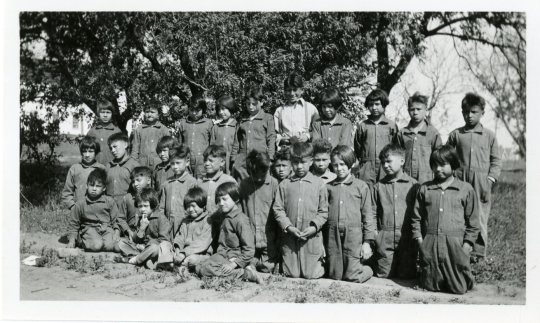
“Fort Totten Preventorium Children,” 1936, Records of the Bureau of Indian Affairs, (NARA ID 40571398).
Explore Thousands of Bureau of Indian Affairs Photos Online!
To mark Native American Heritage Month, the National Archives has launched a new webpage featuring thousands of photos from Bureau of Indian Affairs. Nearly 20,000 photos have been scanned, digitized and made available free of charge online, easily searchable by Tribal Nation, topic, or state.
WE NEED YOU!
Take a break from binge watching, become a Citizen Archivist (it’s easy! Info here) and join the Native American Photos Tagging Mission!

Learn more:
National Archives News story by Victoria Macchi, “New Finding Aid Improves Search for Native American Photos.”
Unwritten Record post “Introducing the Bureau of Indian Affairs Photographs Finding Aid!”
Start your search by Tribal Nation, topic, or state.
National Archives News Native American History special topics page.
Related news: Native American Treaties Now Online for the First Time
AOTUS blog on these newly digitized treaties.
Related Pieces of History post by Jessie Kratz: Remembering Lloyd Oliver, U.S. Marine Navajo Code Talker
#native american#davidferriero#indigenous#pandemicfun#american indian#native#heritage#photohistory#native american heritage month
198 notes
·
View notes
Photo
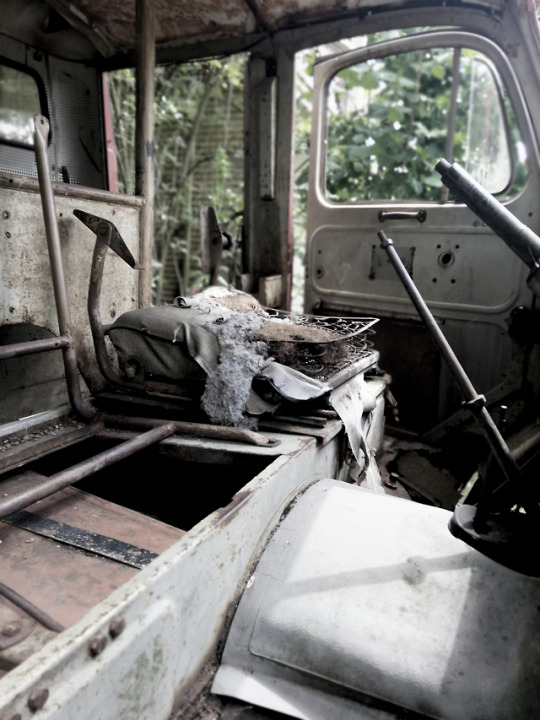
Sanatorium Dolhain, Belgium, 2019
0 notes
Text
Special 300 followers post: places to visit while in Romania (1/5)
I know this post is long overdue, sorry for stalling posting this, but it was hard to think of just a couple of places to visit. Sadly, my mission to bring just a couple of places to visit failed, and I have 40 places to talk about in this post. So, with that said, in no particular order (beside an alphabetical one), here are 40 places to visit while in Romania:
1. Alba Iulia:
Alba Iulia, the seat of Alba county, has a historical significance for Romania. Since the Dacians lived there, the city was an important economical, political and social centre, known back then as Apulon. Once the Romans arrived, they renamed it Apulum and the XIII Gemina Legion was stationed there. Apulum is the largest Roman castrum on the current territory of Romania.
Alba Iulia has also a history of siege, military victories, and unions. The catholic cathedral still has canon marks from a siege by the Ottomans in 1442. In 1599, Michael the Brave entered victoriously the city after the battle of Șelimbăr, becoming Voievode of Transylvania (and soon after uniting Transylvania and Wallachia with Moldavia) and in 1918 the city was chosen for the declaration of union of Transylvania with the Kingdom of Romania, and 4 years later, King Ferdinand of Romania was symbolically crowned there as King of Romania. Each year, on the 1st of December, there are celebrations held in Alba Iulia, as in the rest of Romania, to celebrate the Great Union, but Alba Iulia remains the spiritual center of the event, and I wholeheartedly recomend visiting it in that period.




2. Sculptural Ensemble of Constantin Brâncuși at Târgu Jiu
The Sculptural Ensemble of Constantin Brâncuși at Târgu Jiu is an homage to the Romanian heroes of the First World War.
The ensemble comprises three sculptures: The Table of Silence (a circular stone table surrounded by twelve hourglass-seats, which symbolize time), The Gate of the Kiss (it features a kiss motif on the gate pillars; the transition to another life occuring through it) and the Endless Column (symbolizes the concept of infinity and the infinite sacrifice of the Romanian soldiers), on an axis 1,300 m (4,250 ft) long, oriented west to east. The ensemble is considered to be one of the great works of 20th-century outdoor sculpture.

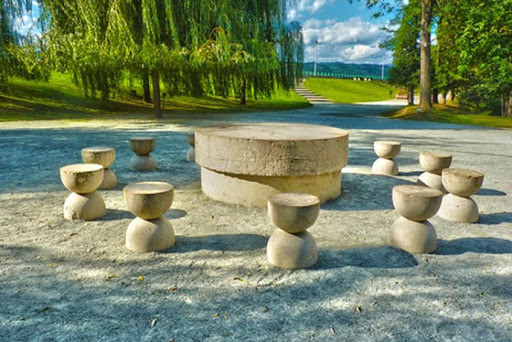
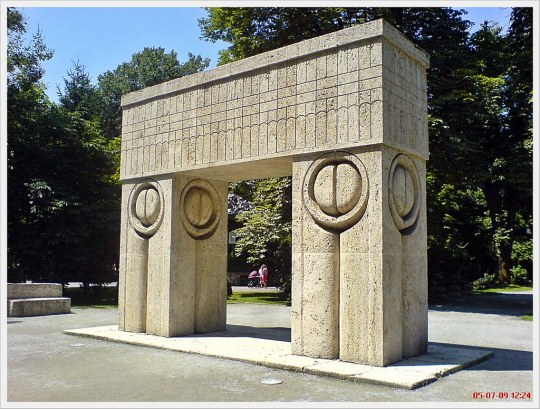

3. Black Church
Biserica Neagră or, as it would be translated, the Black Church, is a church build by the German community in Brașov, being the most important Lutheran place of worship in the region and Romania’s main gothic style monument. When it was finished, it was so big (89 meters/292 feet in length and 65 meters/213 feet in height) that it was declared the biggest church between Vienna and Constantinople.
When visiting, you may want to pay attention to schedule, since in summer time, there are pipe organ concertos three times a week, from musicians across both Romania and other places.


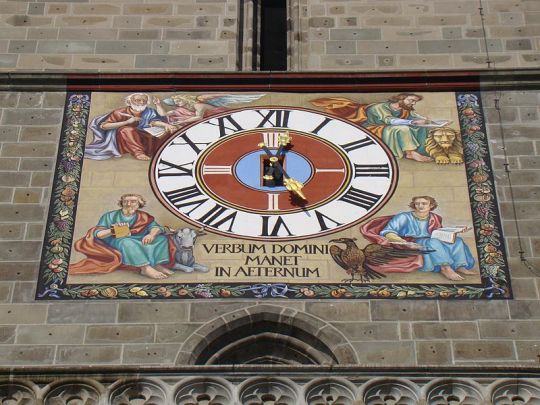

4. Bran Castle
Castelul Bran or Bran Castle (or, as much as I hate to say it, Dracula’s Castle) is a national monument and landmark in Romania. Bran Castle was built by the Transylvanian Saxons of Brașov as a defensive fortress against the Ottoman Empire, and now is a museum dedicated to displaying art and furniture collected by Queen Marie of Romania.
When visiting the Castle, beware the presence of Dracula, as the area is chocked by shops and tourist traps dedicated to the fanged count, but, sadly, this castle may be errenously known as the inspiration for Bram Stoker’s book, but there is evidence that he never visited the place, and the description does not match the actual castle. While you are there, please visit the ethnographic museum, which is close by, and take a breath of the authentic local culture, and not a breath of the stereotypical vampires. There is more to Bran than Dracula and vampires.


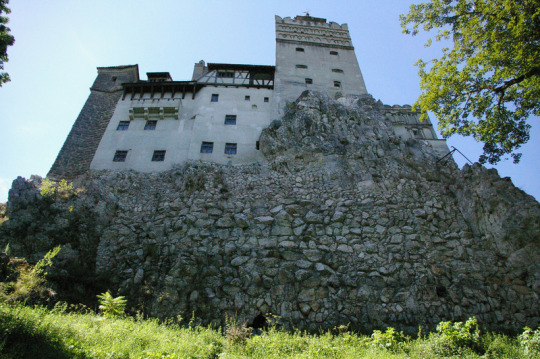
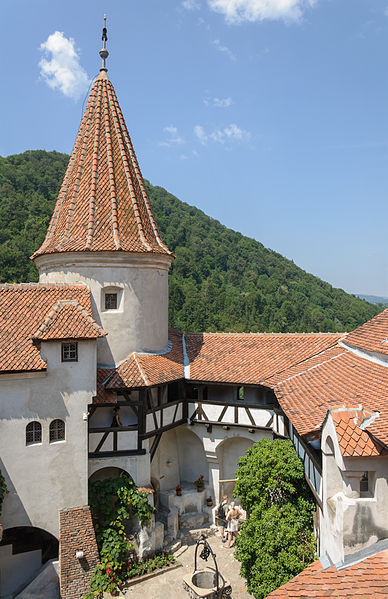
5. Cantacuzino Castle
Castelul Cantacuzino or Cantacuzino Castle is a building completed in 1911, at the request of Prince George Grigore Cantacuzino. The building has a Neo-Romanian style, and belonged to the noble Cantacuzino family, until 1948, when the building was forcefully nationalized and transformed into a preventorium.
The Castle is now a museum, but I have to say, it is sad to visit it. During communism, the building can be said to have been vandalised: the original wall decorations in some rooms were painted over, in some rooms it is 3 layers of paint, in one there are 6. The original furniture was removed, and the family emblem on doors was removed. Seeing and hearing about the damage made my heart ache when I visited it. After the Revolution, the building was given back to the descendants of the Cantacuzino family, who then decided to sell it to private investors. Today, it is open to the public, but, if I recall correctly, the descendants sometime come together at the castle, to have family reunions.
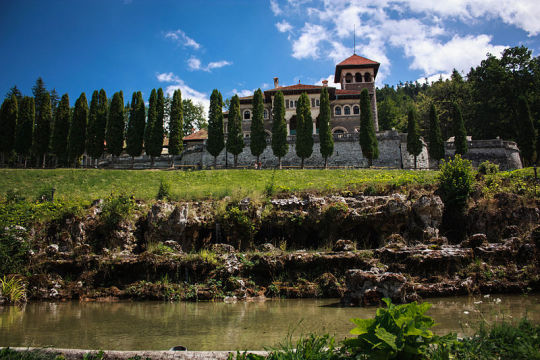

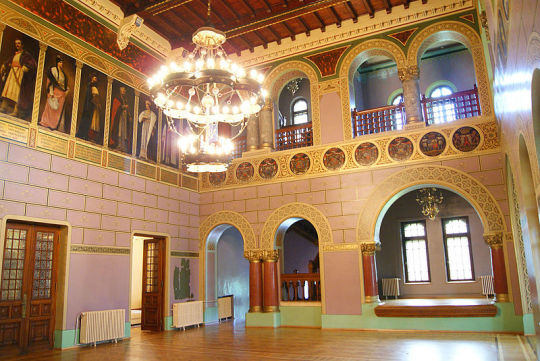
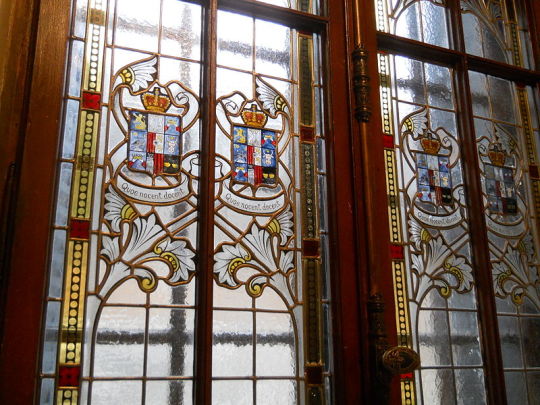
6. Hunyadi Castle
Castelul Huniazilor/Corvinilor or Corvin/Hunyadi Castle is a Gothic-Reneissance Castle in Hunedoara, being one of the largest castles in Europe.
Being known as one of the most beautiful castles in the world, its history began in the 15th century, but the castle is now standing because of a vigurous restoration campaign after a desastrous fire and years of total neglect. The Castle has been featured in different movies and TV shows, the most recent one being 2018′s The Nun, being named as “Cârța Monestary“ in the movie.
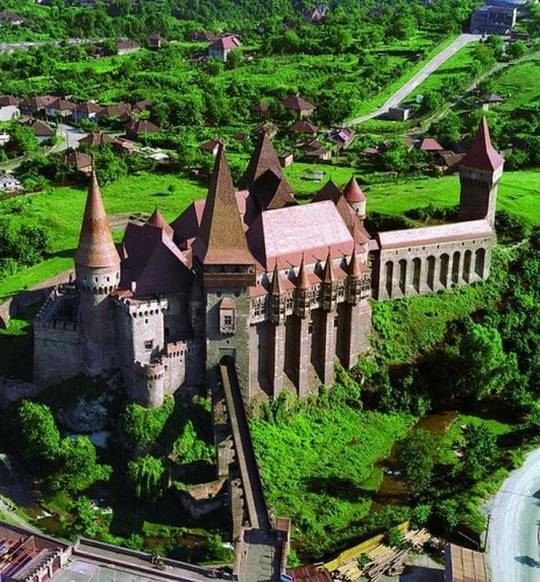



7. Peleș Castle
Castelul Peleș or Peleș Castle is a Neo-Renaissance castle and former royal summer residence located near Sinaia, constructed for King Carol I, the first King of Romania.
The Castle is placed in a beautiful sceneric zone, being able to somewhat transport you back in time to the monarchical era. Peleș, much like the Cantacuzino Castle, was nationalised after the forced abdication of King Mihai, but it has been preserved and returned to the royal family of Romania, which allows the museum inside to still function. Near the Castle, there is one more location I recommend visiting: the smaller Pelișor Castle, which was very dear to Queen Marie of Romania, so much so that her heart is kept in the room it stopped beating. Both castles are jewels of architecture among Romanian castles, and are a must when it comes to visiting Romania.
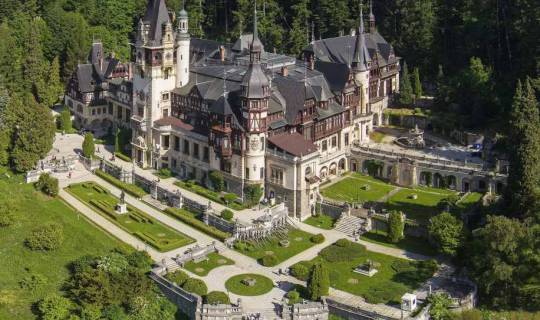


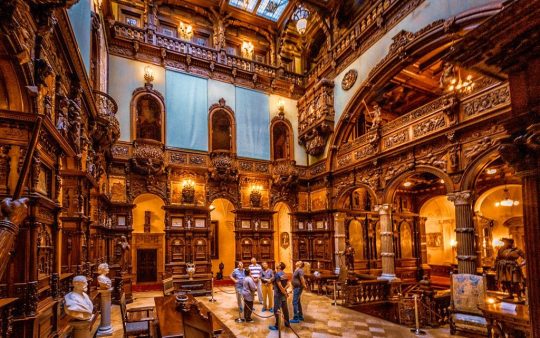
8. Cazanele Dunării
Cazanele Dunării is a sector of the Defileul Dunării region, the region where the Danube has carved out its path over centuries through the Carpathians. The area showcases beautifully the wonders of nature, conquest and ordinary life of cultures iving by the course of a river.
There are 4 hour cruises leaving the town of Orșova, on these cruises you can see the surrounding landscape, small monestaries and two important monuments, one ancient and one modern, but both tell the story of how the Romanian people formed by tradition: the ancient Tabula Traiana, a Roman plaque to celebrate the victorious conquest of Dacia by Emperor Trajan, and the modern carved head of Decebal, the last king of the Dacians, who fought Trajan, until he killed himself to avoid a shameful capture. If you wish to visit other places, the border with Serbia is very close (the Danube itself is the border), and the surrounding towns and villages are very ethnically diverse, giving a taste of Serbian, Romanian, even Czech and German culture.
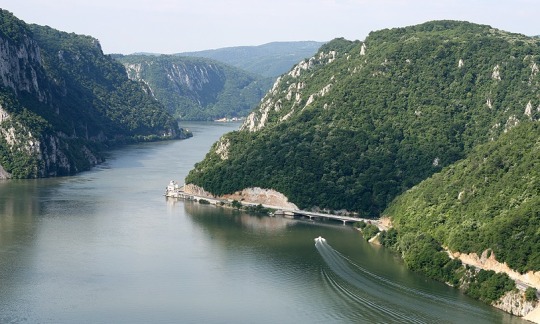
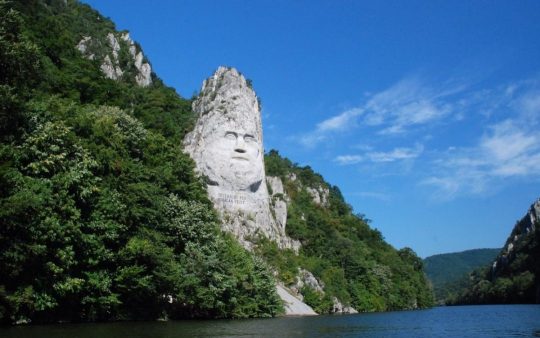


Part 2
#România#Romania#Transilvania#Transylvania#Muntenia#Banat#Oltenia#Alba Iulia#Masa Tăcerii#The Table of Silence#Poarta Sărutului#The Gate of the Kiss#Coloana Infinitului#Endless Column#Biserica Neagră#Black Church#Castelul Bran#Bran Castle#Castelul Cantacuzino#Cantacuzino Castle#Castelul Huniazilor#Hunyadi Castle#Castelul Peleș#Peleș Castle#Pelișor#Cazanele Dunării#Orșova#Tabula Traiana#Capul lui Decebal#Decebal's Head
177 notes
·
View notes
Text
Faculties For Finding out Inside Planning
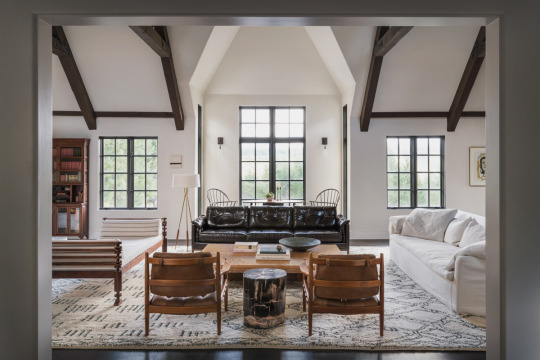
These days, creative professions have come to be very common. Younger persons prefer to gain cash not with their toughness and actual physical capabilities, not even with their mind, but creativeness. These times, younger men and women are very superior and currently prior to getting into senior secondary college they are comprehensive with ideas about their upcoming profession. Starting up to get the job done in the fields related with innovative techniques and new tendencies in modern society is the big goal of today's youth.
It is a genuine issue of look at that uniqueness and creativeness are the most essential tools of results these days. Just about every human being possesses his or her possess resourceful probable, therefore, a person needs to produce these capabilities and expertise by mastering some new occupation or a course. The latter will not only advise a individual the area for contemplating and creativeness, but also creation one thing new and strange which has never ever been done by former generations. Moreover, these creative people are capable to develop a elementary starting off-place for foreseeable future generations. Listed here the freshness of a new technique is of good significance.
It is broadly acknowledged that there are a lot of new fields and tendencies presently. Most of this kind of professions are really resourceful demanding a sober and exclusive creativity, for occasion, cinema acting, theatre performing, crafting, dancing, portray, crafts, radio jockeying, anchoring, trend coming up with, interior designing and so forth. There is no question, that all of these professions are greatly well known among the youthful men and women, but interior planning can be singled out because of to its uniqueness. This uniqueness is composed in the truth that it provides an opportunity to foreseeable future designers to rework the whole universe of their thoughts and wondering power into the object of artistic elegance. Only the noblest men and women are entitled to to have the career of an interior designer. It's in their power to adorn one's property that is considered to be 1 of the most precious properties in a person's daily life. It really is the spot a variety of individuals have already got employed to and it's designer's job to make it substantially far better than it was prior to.
In purchase to develop into a good interior designer 1 has to be ready to satisfy the experienced demands of the business. Consequently, learners should really educate their doing work benchmarks in particular faculties which have began courses in inside building. To enter these types of a higher education just one has to go an entrance check which is executed by the schools to test imaginative analytical capabilities, technological drawing, sketching abilities of the students.
The apps to the interior planning schools can be designed by the university student only immediately after he has passed with his twelfth examinations. The duration of the course can vary from two to four many years, it is dependent on the picked out class and the institute from which the student is preparing to acquire his instruction. There are diverse schools delivering skilled courses in inside coming up with and you are welcome to make your have alternative. They are:
> Attractive Skilled College, Phagwara
> Academy of Art and Style, Maharashtra
> Worldwide Academy of Vogue and Style, Chennai
Architects may style different surroundings, for occasion, these creating the houses, places of work, resorts, malls, retail shops, film studios, cultural establishments (museums, theatres, cinemas), academic institutions (kindergartens, faculties, colleges, institutes, universities), sporting activities establishments (stadiums, sports palaces), dietary establishments (canteens, cafes, eating places), medical institutions (hospitals, wellness centres, preventoriums, polyclinics), public offices, experience spots, convention halls etc. No question, all of designers are often in desire to decorate their interiors as nicely as exteriors.
After completing his diploma in inside designing a college student ought to start out his studying as the intern or trainee in some building household. It is in particular essential to do in the commencing of their career in buy to get an encounter essential in foreseeable future action. This will surely give a pupil this kind of an crucial original realistic expertise demanded to carry out in further more occupation. There are sure traits which an inside building university student will have to possess. Right here you will probably inquire - What are the Characteristics that Make a Great Inside Designer? They are as follows:
- Every single upcoming inside decorator should really be able to read through the thoughts of the consumer and complete the styles according to the wishes of the purchaser. Incredibly typically a human being is not pretty sure what he or she needs to have in his or her dwelling.
In the event you beloved this information in addition to you wish to be given more information regarding thiết kế nội thất i implore you to go to our web-page.
In this circumstance a excellent designer need to have a ability to feel the client's likes and dislikes in order to meet his interests.
- A awesome Interior designer really should continue to keep himself up to date with the hottest tendencies in the style and new developments as properly as innovation in the environment of developing in typical. In purchase to get new details about progress in the environment of design and style, a designer should really go to new structure homes, talk with more expert inside designers, seem through style websites etc.
- A best interior decorator should be incredibly inventive and imaginative, it implies he need to be capable to apply some new ideas for each and every new task. There are numerous inside designers who abide by the standard procedures of design and style in which there are good plenty of simply because they have often practiced them. No doubt, that this kind of designers are not lousy at all, but on the other hand, they are not able to advise the consumer something clean and one of a kind. Hence, their operates turn into additional and a lot more monotonous and the development of a designer, as a specialist, stops on this stage. Other than, they can't carry excitement in the world of structure. So, an inside designer have to be creative not only for the sake of his clients, but also in get to refresh the interior design in basic.
- The following point also issues the pursuits of the buyer. A designer ought to be equipped to manage the layout in accordance with the funds and economical position of the purchaser. Just about every new client involves his individual method and his needs do not always coincide with his material alternatives. In this case a excellent designer ought to be instead tactic to recommend his consumer anything identical but for lessen value.
- A great inside designer need to possess a superior perception of texture and colour combos, as effectively as do the job on strengthening his understanding of distinct classifications of interiors. Besides, he really should be capable to determine what type of layout could be ideal for this or that room.
- It would be preferable for the designs developed by the inside designer to be a lot more than the phrase satisfactory for the purchaser. It is required for more cooperation not only with that purchaser, but also with those who will probably come to you after looking at your terrific design made in the residence of your preceding buyer, for instance. Aside from, this will assure your regularity with the firm you do the job in.
- A designer should really have an means to cope with pressure and challenges which can appear during his activity. Possessing a difficulty a person shouldn't basically shudder at the imagined of attainable even larger difficulties, but serious inside designers get the challenges by the horn, get things below management, and even if a issue occurs, they test to fix it. Complications of interior designers could include the adhering to: acquiring a structure that their clients will hopefully like, assembly the interests of both equally clientele and making code, having to deal with difficult and inadequate consumers most of the time, handling various assignments all at the same time, etc.
1 note
·
View note
Text
RDR History Question Requests?
Hi y’all. First final over. Never thought it would be. lol Now the second one. It’s about preserving tuberculosis preventoriums, sanitoriums and homes ! Yes, I’ll be writing a red dead related tb thing.
I’m still writing about brothels but ever since the one I was going to preserve was knocked down, we’re trying to have to find a new one.I’m considered by a lot of people to be the Abigail Authority when it comes to some forms of meta and history. lol
SO, with that said, feel free to ask me questions about TB or historical sex work!
Check out my masterlist for some FAQ’s I wrote about sex work and the red dead characters. I can write about other history, too!
’m also a weird combo of tired and lonely lol. I have to remember how to human again. (I will send new stuff audio wise tomorrow. There are only a handful of conversations left and basically very conversation from the game will be uploaded.)
#rdr 2#abigail marston#abigail roberts#john marston#arthur morgan#van der linde gang#red dead redemption 2#hosea matthews#karen jones#dutch van der linde#jack marston#sean macguire#lenny summers#kieran duffy#tilly jackson#susan grimshaw
22 notes
·
View notes
Text
Preventorium Dolhain - Das verlassene Sanatorium
Hier wurden keine erkrankten Menschen hier aufgenommen, sondern nur Menschen, die aus Familien kamen, in denen es bekannte TBC-Fälle gab, bei denen sich selber aber noch keine Symptome der Infektion gezeigt hatten. Sie wurden Präventiv aufgenommen, um die körpereigene Widerstandskraft zu erhöhen.
In den 50ern eröffnet, wurde der Betrieb mit 150 Betten bereits wieder eingestellt. Dank moderner Medizin wurden solche Einrichtungen immer unwichtiger.
Zwischenzeitig diente das Gebäude noch als Atelier genutzt, seitdem steht dort die Zeitz still.
Außer regelmäßigen Softair-Veranstaltungen am Wochenende erfüllt dieses Gebäude keinen Zweck mehr und verfällt somit weiterhin...
Lesen Sie den ganzen Artikel
0 notes
Photo

#nepente until 16sept 👌 #photographysculpture #xixbc #bienaldecerveira #visualarts #art #portugal #barrocasleiter #archive #penacova #preventorium #childs #wood (em Fundação Bienal de Arte de Cerveira)
#nepente#xixbc#preventorium#portugal#archive#penacova#childs#bienaldecerveira#wood#art#barrocasleiter#visualarts#photographysculpture
0 notes
Photo



(via Le préventorium pour enfants) @Ville_BoulogneB #LesPeupliers Le #préventorium pour #enfants se met en place principalement entre les deux guerres pour s’inscrire dans la prévention des #maladies pulmonaires comme la #tuberculose. + ici https://vagabondageautourdesoi.com/2021/04/26/le-preventorium-pour-enfants/
0 notes
Photo
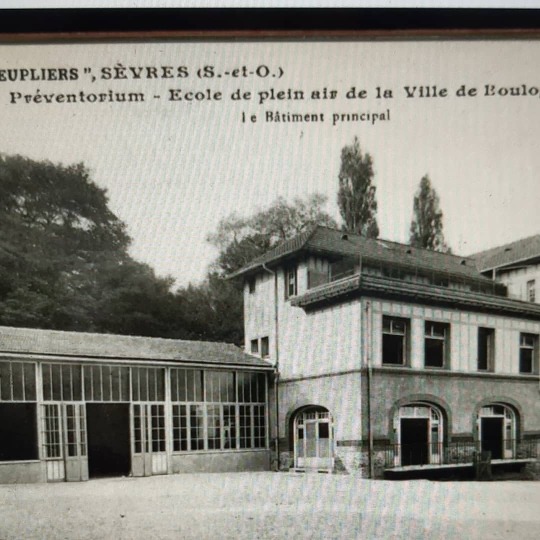
@villedeboulognebillancourt #LesPeupliers Le #préventorium pour #enfants se met en place principalement entre les deux guerres pour s’inscrire dans la prévention des #maladies pulmonaires comme la #tuberculose. + ici https://vagabondageautourdesoi.com/2021/04/26/le-preventorium-pour-enfants/ https://www.instagram.com/p/COm7m9VnOxHY6VKRIE7nL97g248aGIuuUg7Des0/?igshid=1k2efa5fs8ou0
0 notes